A big week for pandemic news as more restrictions bite across the country. The Secretary of State is getting tetchy and the Department for Education and the OfS are both going back on recent pledges to reduce bureaucracy, as they add new information requirements. Meanwhile if you missed it, Jane wrote last week for the 10th anniversary of the Lighthouse Policy Group on what policy people actually do and why.
Graduates preparation for work
The DfE published the Employer Skills Survey 2019. Employers stated 78% of graduates were well prepared for work during their first job. The media has picked up on a slight drop in perception (80% in 2016; 81% in 2014). Research Professional cover the survey release in Graduates ‘less prepared for work’ than four years ago. The article also highlights that:
- Staff working at the employers who were surveyed were given less training than in previous years
- Fewer employers had vacancies than in 2017, but the number of hard-to-fill vacancies had increased. “This suggests skills problems when recruiting are persisting [and] indeed, given the lower vacancy numbers, becoming more ‘concentrated’,” the survey said.
- The government recently revealed plans to encourage more school leavers to take vocational courses, saying there were “too many graduates with degrees that don’t get them the jobs that they want”, and too many skills shortages in important occupations. Social media followers will likely have spotted the backlash at the Fatima cyber advert this week (the BBC cover how the Culture Secretary stated it was crass and immediately removed to be replaced by a picture of a baker – so the 4 universities offering foundation degrees in baking technology might be quivering under their chef’s hats right now).
Joe Marshall, Chief Executive of the National Centre for Universities and Business, said the figures showed that employers were “consistently reporting that graduates are very well or well prepared for work” and that “should be commended”. However, he stressed that it was “vital that employers and universities collaborate” to increase positive feedback from employers in future years. “The labour market is fast moving, now more than ever. It’s only through working together and universities understanding employers’ current and future skill needs that we can best prepare graduates for the world of work.”
On a similar theme the Sustainability Exchange published Future Graduate Skills: A Scoping Study – Executive Summary which aims to bring further understanding to the area of changing graduate requirements, graduate skills gaps, and sustainability skills. While it primarily focusses on sustainability there are familiar themes for graduate employment. Here are the most relevant summary recommendations (for more detail access the links on the left hand side of this screen).
Students
- Undertake extra-curricular activities during your time at university, and make a note of the projects this involves, the responsibilities you take on, and the skills you have learned, as this will be valuable when you come to apply for work.
- Be proactive in seeking out opportunities for real-world work experience alongside academic study
Universities
- All degree courses should involve at least 2 weeks (or 1 day per week for 1 semester) of work experience or a placement of some kind to enable students to develop real-world understanding of the professional or business workplace. This does not have to be in the sector related to their degree discipline, as the focus is on developing students’ experience of practical realities alongside academic theory.
- All courses must equip students with the cross-cutting skills necessary for addressing sustainability challenges, such as critical thinking, lateral thinking, and systems thinking. Interdisciplinary or cross-disciplinary learning and problem solving are valuable ways to get students out of their disciplinary silos and to start understanding the interconnectivity of systems.
- Universities as businesses have a responsibility to provide their staff (both office staff and teaching staff) with training on sustainability. This includes sustainability theory, practical applications of sustainability to different sectors, how it relates to their discipline, and how sustainability can be incorporated into their modules and teaching material
Business
- Businesses should be more proactive in contacting universities to offer work placement opportunities, guest lectures, and information on what exactly they are looking for in the graduates that they hire.
Research
UKRI & the OfS have two new short videos on postgraduate researcher mental health and the importance of the role of the supervisor. They follow on from the OfS and Vitae report we mentioned in a previous policy update.
Size isn’t everything Research Fundermentals blogged highlighting that Although larger universities get the majority of research funding, their success rates are no better than that of smaller ones. What makes the difference is the culture and expectations at each.
There’s a nice scatterplot which shows that almost all UK institutions fit a very clear ‘funnel’, and that those with most of the grants don’t necessarily have a higher success rate than those with very few…the amount of their UKRI funding is solely down to the fact that these universities put in more applications. It should follow, then, that smaller universities just need to apply more, and their income would significantly increase. This is true up to a point. But realistically there are five major factors that stop them doing so. Culture, training, confidence, time and necessity all impact. Read more here. The fact that success rates for the smaller universities are as good as the best in class shows that a lack of talent is not what is stopping smaller institutions from getting more funding, everything else is.
Less Research Time Research Professional discuss the drop in time spend doing research since the pandemic gripped the nation:
- 40% of researchers reported a decrease (early career researchers were most likely to report the drop)
- Teaching load and an increase in caring responsibilities were noted as they key factors leading to a drop of research time
- Other issues: research or publications being delayed; future funding opportunities decreased
- Half of researchers surveyed have undertaken research in new directions e.g. Covid related work
- Medical researchers who are not working on Covid-19 research were frustrated and felt their work was perceived as lower priority for funding.
- Respondents made a number of suggestions to improve the situation, including improving access to facilities; encouraging collaboration among research groups; granting extensions to projects and funding; and making concessions for any reduction in research quality.
Impact The Universities Policy Engagement Network has a new blog – Equality of voice in policy impact: seizing the pandemic moment.
Excerpts:
- …one key area where the pandemic presents a chance to improve on the past is that of diversity of voice – the question of which experts get policy makers’ attention. And this, in my view, is an area that goes to the very heart of what we are attempting to do with policy impact – because we can’t claim to be improving the basis of decisions if the expertise we contribute does not reflect the breadth of expertise that exists.
- One line of inequality stands out as potentially ‘having its moment’: the long-acknowledged need to broaden out beyond the ‘golden triangle’ of Cambridge, Oxford and London to tap into the deep wells of knowledge that exist elsewhere. As activity shifted online in the wake of Covid-19, many an academic from further afield has found new opportunities to speak directly to decision makers in ways previously limited to those based a short hop from the corridors of power. Finding time in busy people’s diaries has proven somewhat easier when the ask is simply to dial into a Zoom meeting. And it turns out that when in enforced isolation, policy makers are as receptive as anyone to something approximating face to face contact.
- Things will, at some point, shift back again – but both researchers and policy makers are now far more comfortable than before with virtual engagement. So there’s good reason to think that geography will be less of a factor in who gets heard in future.
- …virtual engagement favours the tech-savvy young researcher already active on social media, so arguably this is a good moment to address the relatively low profile of early career researchers. But in a high-stakes world, are policy makers willing to take a chance on as-yet-unproven experts? More importantly, in a largely online world is it feasible for younger researchers to develop the networks and social capital on which many a senior academic’s public profile has been built?
Future Leadership Fellows Wonkhe tell us – Speaking at the Future Leaders Conference science minister Amanda Solloway announced the latest wave of Future Leadership Fellows, who together will receive £109m in government funding in support of their work on major scientific problems, such as cancer treatment, space travel, and emissions reduction. The funding comes as part of UKRI’s flagship Future Leadership Fellowship scheme, on whose website you can find the full list of fellows.
Science Minister Amanda Solloway said: We are committed to building back better through research and innovation, and supporting our science superstars in every corner of the UK. By backing these inspirational Future Leaders Fellows, we will ensure that their brilliant ideas can be transferred straight from the lab into vital everyday products and services that will help to change all our lives for the better.
ECR Forum Wonkhe report that UKRI has announced a pilot of a new Early Careers Researcher’s Forum, to be launched later this year. The forum will seek to recruit 400 early career researchers to share their insight with UKRI on the issues that matter to them.
Event The Institute for Policy & Engagement is running an event on how to achieve policy impact through digital means. The workshop will explore the “New Normal” and what this has meant for researchers and policy impact professionals. Many have had to change their approach to connecting with policy makers. This session will investigate new ways to engage and achieve policy impact in this context.
A Covid Christmas
The OfS are planning to re-survey students on their opinion of teaching and learning to see if anything has changed since their last poll which was compiled at the peak of lockdown. Here’s the results from the last poll.
OfS say:
- With the rapid changes in course delivery as a result of public health advice, we are actively seeking assurances from individual universities and colleges about the quality of their online and blended offers, and that the course will be delivered as promised during the current academic year even if changes are required for public health reasons. Indeed, while online teaching is of course different to face-to-face teaching, many universities and colleges have developed innovative and good quality digital provision for their students. Where we believe universities and colleges are not delivering on this, we can investigate and take action if the quality of courses falls below our minimum requirements.
Is it just Sarah, or does deliver the course as promised but change it to adapt to emerging public health advice seem a little oxymoronic?
Wonkhe report the latest speculation on the measures surrounding students returning home for Christmas: English universities could be asked to lock down for the final two weeks of term to make it possible for students safely to return home for Christmas, according to Richard Adams and Sally Weale at the Guardian. Reportedly, “early stage” plans would involve teaching delivered fully online while students remained on or near campus in term-time accommodation. The plans have yet to be endorsed by Universities UK or any other representative body for universities, and it’s not clear at this stage whether the Westminster government is making any plans to manage a further student migration event in January. There’s also coverage in the BBC, the Times, the Guardian, the Independent, i News, and the Mail.
Meanwhile iNews state switching to 100% online teaching two weeks before the end of term is too late to halt the spread of the virus. And the Telegraph consider an alternative ‘testing blitz’ with negative results the trigger to travel home.
Here’s a set of pandemic related Parliamentary Questions:
- Ensuring universities remain operational throughout the pandemic
- Assessment of the effect of the covid-19 outbreak on universities
- Whether the location of residential university students who test positive for COVID-19 is recorded in national statistics according to (1) their GP’s address or (2) their university address.
- Detaining students who have not tested C-19 positive in halls of residence and definition of a student household
- Limiting the spread of C-19 on university campus
- Students with specialist medical conditions that are isolating
- Students safely heading home for Christmas
- Publishing data on students living in campus accommodation with C-19
- With reference to the minutes of the fifty-fifth meeting of SAGE on covid-19 on 3 September 2020, if the Government has developed a national strategy defining key principles for additional covid-19 testing in universities.
- Funding grants during the second stage of the university covid-19 research support package that was announced in June 2020
- Support for universities implementing their own testing measures
- Several longer exchanges through Education Oral Questions on:
- safe teaching and services within universities during the pandemic.
- Access to digital and online learning, the Christmas guidance, numbers with C-19 at universities and institutions providing data on numbers
- Higher non-completion rates
- OfS (it is buried within the Topical Questions link so I’ll include the exchange below):
Q – Andrew Griffith: The purpose of the Office for Students is that “every student has a fulfilling experience of higher education”. In the light of the current difficulties faced by undergraduates, will the Secretary of State commit to a post-covid review of the OfS?
A – Gavin Williamson: I will work closely with the OfS to ensure that it is working with universities and that universities are delivering what students expect and require for their studies. We will always work closely with all government organisations to deliver the very best for students and ensure that universities deliver on students’ behalf.
- Assessment of HE institution insolvency
Students & Mental Health
- Mental health training for university lecturers
- Government support for student wellbeing; and supporting universities to provide more mental health and wellbeing support to students during the Coronavirus.
- Assessing the long term impact of lockdown on students’ mental health
Student Covid complaints: The higher education ombudsbody for England and Wales is testing “special processes” that would allow it to more quickly process complaints from large numbers of dissatisfied students. Research Professional have the scoop here.
Student Sport: Wonkhe report on student sport exemptions: Indoor student sport at universities is exempt from simplified restrictions within all of the new English coronavirus alert levels, according to an updated Sport England FAQ. It says that student sport can take place in groups larger than six on the basis that such activity is covered by the exemption allowing activities “for the purpose of education and training” – although organisers should consider how best to minimise exposure by avoiding unnecessary travel and mixing with teams from other institutions.
Admissions – Exams
GCSE, AS and A level exams will go ahead in 2021 but start 3 weeks later than usual (on 7 June). Results days are Tuesday 24 August for A and AS levels and Friday 27 August for GCSEs so students will start the following academic year as normal. Gavin Williamson, SoS Education, stated:
- Fairness to pupils is my priority, and will continue to be at the forefront of every decision we take in the lead up to exams next summer. Exams are the fairest way of judging a student’s performance so they will go ahead, underpinned by contingency measures developed in partnership with the sector.
- Students have experienced considerable disruption and it’s right we give them, and their teachers, the certainty that exams will go ahead and more time to prepare.
The Government’s press release also stated:
- Given rising case numbers and the battle to suppress the virus, it is also right that there is consideration of the range of scenarios which might impact students’ ability to sit exams and develop contingency plans. More detail on this to be published later in the year but work with Ofsted on circumstances has begun.
- The government is also confirming today that no further subject-level changes to exams and assessments will be made for GCSEs, AS and A levels… It is expected that for the majority of vocational and technical qualifications that are taken alongside or instead of GCSEs, AS and A levels, awarding organisations will look to align timetables with 2021 exams.
Research Professional (RP) state that University leaders have demanded more details on how they should cope with a three-week delay to A-level exams in 2021. The also report that UUK have said: Universities will work to implement the new timetable. However, we continue to seek further details from the UK government and Ofqual—in particular on how the process will ensure fairness in the 2021 grades. RP also digest the wider and interwoven elements surrounding the announcement here and inform that Daniel Zeichner, Labour MP and co-chair of the All-Party Parliamentary Group for Universities, stated: I suspect that most universities will be reluctant to alter their term dates until we are much clearer about the availability of vaccines and the need to maintain virtual teaching. RP also asked Zeichner if he was surprised that the education secretary had seemingly made it through the summer’s chaos relatively unscathed. “While many will be surprised that Williamson is still in post, this is not a government that takes responsibility,” he said. “My guess is that most ministers will stay in place to take the flak until next year.”
Colleagues interested in this topic may enjoy this House of Commons debate on Exams: Covid-19.
Institutes of Technology
The Government announced the funding competition for the next wave of Institutes of Technology (IoT) which are business and educational collaborations (FE and HE) aiming to deliver the higher technical knowledge and develop the workplace skills to fit with the country’s industry needs. The Government has committed £120 million so there is an IoT in every area of the country, as part of their levelling up agenda. As yet Dorset does not have an IoT.
IoTs aim to:
- Significantly increase the number of learners with higher technical skills which are crucial to national, regional and local productivity growth;
- Attract a wide range of learners to maximise the social as well as the economic impact of this new type of institution;
- Improve the occupational competency of learners to meet the needs of employers now and in the future.
IoT’s are intended to address gaps in manufacturing, engineering and transport which currently have an acute shortage of technician level STEM skills and to boost workforce numbers in artificial intelligence, data and innovative technologies. You can read more on IoTs here.
Meanwhile Gordon Marsden (previous shadow FE &HE Minister) stated that IoTs risked becoming “skills white elephants” and “the follies of mandarins and ministers”…Simply building and opening new IoTs won’t do the business—in fact, current stats are showing that those already opened are struggling for numbers.
Anti-Semitism
The Government’s ambition for all HE institutions to adopt the IHRA antisemitism definition continued to inspire comment this week. A Jewish academic, Geoffrey Alderman, writes in Jewish News on the drawbacks of the definition (it is worth a read) and concludes: Like the proverbial curate’s egg, the IHRA definition is good in parts. But it is very much a work in progress. To compel universities to adopt it in its present form, on pain of financial penalties and other sanctions, seems to me a thoroughly bad idea.
At the end of last week SoS Gavin Williamson wrote to Vice Chancellors in what Wonkhe called a final written warning. The Minister’s letter states:
- I have asked my officials to look at developing options to address this [universities not adopting the definition]…there remain too many disturbing incidents of antisemitism on campus, from both students and staff, and a lack of willingness by too many universities to confront this…I am frankly disappointed that the majority of higher education providers have not yet adopted the IHRA definition. I am surprised that some universities have actively chosen not to use this straightforward way to demonstrate clearly that they do not tolerate antisemitism. These providers are letting down all their staff and students, and, shamefully, their Jewish students in particular.
- While many universities have rightly been quick over the summer to demonstrate their readiness to take action against other forms of racism, it is frankly disturbing that so many are dragging their feet on the matter of antisemitism. The repugnant belief that antisemitism is somehow a less serious, or more acceptable, form of racism has taken insidious hold in some parts of British society, and I am quite clear that universities must play their part in rooting out this attitude and demonstrating that antisemitism is abhorrent.
- I believe sincerely that adopting the IHRA definition is morally the right thing to do.
- I will consider going further to ensure that all providers are tackling antisemitism, with robust measures in place to address issues when they arise. I have asked my officials to explore how best to achieve this. I have asked my officials to consider options that include directing the OfS to impose a new regulatory condition of registration and suspending funding streams for universities at which antisemitic incidents occur and which have not signed up to the definition.
- If I have not seen the overwhelming majority of institutions adopting the definition by Christmas then I will act.
The Board of Deputies for British Jews has applauded the Minister’s letter, stating: We welcome this intervention by Secretary of State for Education Gavin Williamson calling on universities which have failed to sign up to the IHRA definition of antisemitism to do so by the end of the year. His letter demonstrates the Government’s commitment to protecting Jewish students on campus. We have been calling on universities to adopt the international definition of antisemitism for several years. There is no excuse for them not to take this essential step. We hope that the Government will take a similarly muscular approach towards IHRA with social media companies in the package around the Online Harms Bill.
UUK have stated: We recommend universities do all they can to tackle antisemitism, including considering the IHRA definition, whilst also recognising their duty to promote freedom of speech within the law.
Research Professional say:
- The likely outcome of all this will be that university managers see no alternative but to adopt the terms of the IHRA, potentially driving a further wedge between ‘the university’ and some of its staff and students. Division is the point of a culture war after all.
- The cause of fighting antisemitism is too important to be treated in this way. It should not be a stick with which to beat the perceived recalcitrance of liberal universities.
- It is unlikely that when universities are in the headlines for the effects of coronavirus among the student population, the issue of the IHRA definition will gain much momentum in the national press. The country, if not the secretary of state, has other priorities right now.
A focussed Research Professional article on anti-Semitism here.
Legal perspective Smita Jamdar, a Partner at legal firm Shakespeare Martineau contemplates whether the Minister would be acting within the law if he was to take action against universities who do not adopt the definition:
- There is no legal obligation on universities to adopt the definition. The Secretary of State’s recent letter to Vice Chancellors exhorting them to adopt the definition makes no claim to the contrary; instead it explicitly asserts that adopting the definition is in the view of the Secretary of State morally the right thing to do. He goes on, however, to explain that he is asking officials to explore options for enforcing this moral obligation, including “directing” the OfS to impose a registration condition or suspending funding streams. There are obvious reasons why alarm bells should ring when politicians seek to enforce what they see as moral obligations through indirect legal routes such as this.
- Does the Secretary of State have the power to direct the OfS to impose a registration condition? Not as such, not directly…the Secretary of State can decide what weight to attach to institutional autonomy when deciding whether to guide the OfS towards a registration condition on adopting the definition. But, equally, the OfS has the discretion not to follow the Secretary of State’s guidance…The OfS might itself face challenges for breach of its public sector equality duty if it takes action to introduce a condition in relation to antisemitism, but not in relation to other forms of discrimination. Nevertheless, if the Secretary of State and the OfS address these issues in a reasonable way, a court is likely to defer to their judgment.
- What about restricting access to funding streams? This is straight out of Trump’s playbook, who last year signed an executive order to require federal agencies to tie access to funding to a commitment by universities to ensuring freedom of speech… Restricting access to student loan funding would most likely require an ability to restrict what individual providers could charge by way of fees, perhaps using the model developed under the abortive student number controls that were introduced and then revoked earlier this year.
- So, there are hurdles to overcome in introducing a registration condition or restricting access to funding, but they are not insurmountable.
- Susan Lapworth, Director of Regulation at the Office for Students has helpfully pointed out that if the Secretary of State issues a formal direction (rather than guidance) the OfS must not merely have regard to it, it must follow it. A direction under the Higher Education and Research Act must be made through regulations.
There is lots more discussion and detail on the legal technicalities in Smita’s blog here.
Credit Transfer
Tony Strike (Sheffield University) writes for Research Professional on credit transfer drawing on his research surrounding the choice a student makes to change institution.
- The students we surveyed and interviewed said that student mobility could help them remain in higher education if their personal circumstances changed—that is, it could help a student move to a provider more suited to their changed needs, preventing the student from being forced to drop out of higher education altogether. Students did not see it as an opportunity to trade up or to move around in higher education by acting as if they were shoppers in a market.
- Almost two-thirds of the students surveyed said they were unsure about or disagreed with the principle that improving student mobility would improve the quality and value of their degree. Most students in focus groups expressed concerns about the quality of their course and its intellectual coherence if they engaged in mobility processes.
- Any switching scheme introduced with a narrative only about student choice would therefore have imposed a view on students that most did not hold. The students in the study did, however, think transfer should be possible and frictionless when and if they needed it, and when other stresses driving the need to move would mean any artificial barriers were likely to be keenly felt.
- But the students who wanted to move, or who could conceive circumstances in which they would have to move, feared it would be difficult and would devalue their degree and make them look unreliable…Their teachers, equally, had concerns about the intellectual integrity of a degree ‘broken’ across locations.
- Students nevertheless said that there was a need for clearer and more transparent processes, information, advice and guidance on student mobility in higher education providers, and higher education as a whole, which they perceived would help students in need and tackle any stigma associated with transferring.
- There did not appear to be significant demand for student mobility that remained unmet because of existing practices…However, the minority who expressed a desire to withdraw or transfer said they would benefit from changes that made student mobility a more openly recognised practice.
Last week Jo Johnson (previous HE minister who attempted to push student credit and transferring institutions) stated he’d received ‘push back’ from some HE institutions on the credit transfer plans. The media pointed the finger at the Russell Group which prompted Tony’s to write the article. The article is clear it is against the politicisation of the use of student credit transfer and focussed on supporting students rather than a marketisation strategy. He states: If students and universities did push back against the idea of credit transfer then it was not against credit transfer itself but against the attempted politicisation, rather than amelioriation, of a mechanism already being used in the student interest.
International
Wonkhe report on the new UUK guidance – Managing risks in Internationalisation: Security related issues.
- Universities UK has published new guidance for universities on how to safeguard against security risks while engaging in international collaboration The advice is split into four key areas: protecting a university’s reputation and values, its people, its campus, and its partnerships.
- Among its recommendations, the advice suggests that Chatham House rules could be introduced to online seminars, to allow international students to submit work anonymously, without fear of interference from their government. It’s also recommended that university governing bodies assess annually the effectiveness of measures put in place to manage risks associated with internationalisation. The Times reports on the guidance and also publishes an editorial on the need for universities to resist the influence of China.
Brexit: Wonkhe report that the DfE has also published a new compilation of briefings and guidance for higher education providers to prepare for the end of the Brexit transition period on 31 December 2020.
PQs:
- Potential effect of the end of the transition period on FE & HE (Answer: The Government are thinking about it.)
- Continuation of Erasmus, and alternative to Erasmus.
Access & Participation
NEON (and ESRC) have published The Future of Student Outcomes featuring case studies from institutional projects which address gaps in degree attainment and how to improve undergraduate degree outcomes. The press release calls on the Government to shift attention away from assessing the value of courses and toward supporting those groups who are more likely not to achieve good degrees and graduate jobs…The report argues that while the Prime Minister and the government is right to highlight challenges associated with graduate unemployment/under-employment and low earnings addressing these issues by restricting entry to certain course[s], [or] to higher education overall is a one club approach to a multi-faceted problem.
Dr Graeme Atherton, NEON Director, states:
As this report shows improving student outcomes means concentrating on which students need support, understanding their needs and then making the necessary changes in policy and practice to make a real difference. Vague attacks on course quality, or forcing young people away from higher education will not help the students who really need to achieve their full potential.
The report calls for a student-focussed approach to improving outcome, including:
- embedding a value-added approach to teaching learners from BAME and lower socio-economic groups that recognizes their strengths and culture
- addressing the heavy psychological burden of debt on students,
- investing in better financial and non-financial support for post-graduate students
- a national work experience framework for students that goes beyond the present socially skewed, patchwork approach based on unpaid internships.
Graeme Atherton also blogs for Wonkhe to explain the basics.
Research Professional also cover the story here. Neon also explored how the “long shadow” of student loans affected outcomes for disadvantaged students and how precarious academic contracts constrain widening participation work.
Education Committee The Education Committee held two sessions on left-behind white pupils from disadvantaged backgrounds with a number of notable HE figures giving evidence. You can read a summary of the session prepared by Dods here or access the full session. The BBC also cover it here. Below we cover a Parliamentary discussion on the Equality Act which also mentions white working class boys.
Disability A new Wonkhe blog on how few disabled graduates are aware of the financial support available to them for access to work. Only 0.76% of disabled people in the workforce are applying for Access to Work funding.
Parliamentary Questions
- Ensuring that the Lifetime Skills Guarantee is accessible to those with disabilities.
- The adequacy of careers advice in secondary education, particularly advice on the social mobility of pupils from disadvantaged backgrounds.
- What steps the Government has taken to close the attainment gap for (1) disabled children, and (2) children from (a) disadvantaged, and (b) BAME, communities.
- Care leavers access to digital devices and the internet; and the same answer was given to what plans they have to meet with organisations which work with care leavers to discuss access to digital devices and the internet.
- To ask Her Majesty’s Government what assessment they have made of the report by the Social Mobility Commission The long shadow of deprivation, published on 15 September. (This has an extended debate style answer because it is a response to an oral question within the Lords.)
Disadvantage, discrimination and the Equality Act
Ben Bradley MP introduced a discussion into the Commons on the Equality Act 2010: Children from Disadvantaged Backgrounds. He stated:
- Rather than the Equality Act 2010 existing to prevent discrimination, an awful lot of people in influential positions—even in our national institutions—seem to be under the impression that the Act and its provisions on positive action give them the right to actively discriminate in favour of certain groups. Discrimination on the basis of those characteristics is, of course, illegal, whether it has “positive” as a prefix or not, but it seems commonplace. For example, there are countless scholarships and bursaries for higher levels of study offered only to BAME students. That is not positive action, I am afraid; that is discrimination. There is a difference. Encouraging under-represented BAME students to apply for scholarships, yes; excluding all white students from a scholarship on the basis of their race should be a no. That is the very definition of discrimination, and it is even worse when, without the lens of identity politics, it is actually the disadvantaged white children who struggle most to access higher education, not BAME children. That positive discrimination favours a group that already does better statistically, and at the expense of the most under-represented. But as I have said, that is commonplace. The Act, or at least its interpretation and implementation, is fundamentally flawed.
- According to research by the writer and commentator Douglas Murray, the Act has, in the main, tended to support and promote those who are already closest to their destination, rather than digging down into supporting those in genuine need, perhaps due to the lack of provision around socioeconomic circumstances… It seems clear that socioeconomic status or social class is, in fact, the greatest indicator of life chances, but that is not a protected characteristic nor is it enacted in section 1. I am sure that there is a reason. Geographical disadvantage was also raised.
The discussion moved onto white working-class boys:
- In education at least, the constant false interpretation of the Act, which promotes positive action for BAME and female pupils, seems entirely backwards. Disadvantaged white boys are statistically faring the worst. They are under-represented at universities and in our public institutions, and their life chances are most limited because they are most likely to have no qualifications.
- I am fed up to the back teeth with identity politics. I do not want to be stood here saying, “White kids this,” and, “White kids that.” I value all kids and their futures, and the support they get should be based on what they need, not on the colour of their skin, their gender or any other grand narrative that we concoct to make ourselves feel better. Separating black and white, gay and straight, male and female in that way is combative and unhelpful, but it sometimes feels like I have to highlight white disadvantaged kids and their plight, because otherwise they do not seem to get a look in.
- If we talk generally about disadvantage, the system and our legislation—this misinterpretation of the Equality Act—always seem to bring the discussion back around to the BAME, female and other misinterpretations that we have enshrined in law. If we do not say “white kids”, the popular narrative and the system seem to leave them behind—and have done so in many cases—in favour of a fundamentally flawed diversity agenda, which is hugely frustrating and, in many ways, wrong.
- …will the Government review the implications of amending the Act to remove or change any damaging positive action elements that go way beyond preventing discrimination and, due to the constant misinterpretation of those who claim ownership of it, appear in practice to condone positive discrimination to the exclusion of some of our country’s poorest people?
The Minister responded: The Equality Act provides protection to all children, as well as to adults. We must get away from the perception that protected characteristics in the Act are there only to protect certain groups and exclude others. For example, a white boy at school is covered by the Act in the same way, and to the same extent, as his BAME classmates or schoolgirls of any race. If a white boy from a disadvantaged background feels he has been treated less fairly in educational work compared with his female or BAME peers, he has a means of redress available to him, initially through informal routes, but ultimately at a tribunal if it is felt to be necessary.
And dismissed Ben’s claims of discrimination:
- The Act enables positive action to help to ensure that all groups of society are fairly represented, but that is not the same as positive discrimination, where one group might be unfairly favoured over another. Positive action is designed to enable the promotion of a level playing field. An example of positive action is when an employer wants to address the fact that it does not have any disabled apprentices; the employer can favour the recruitment of a disabled applicant over a non-disabled one, provided that their applications are broadly of equal merit. That is positive action.
- Positive action is designed to enable opportunities to be given, as opposed to positive discrimination, which is unlawful. That is why it is so important that the guidance is clear on the subject. We need to promote the level playing field and enable levelling up, and not encourage behaviour that could constitute levelling down.
- We need to avoid taking a tick-box approach…We want to avoid such distractions and concentrate on real help.
On addressing socio-economic status through the Equality Act:
- Social status is not one of the characteristics protected by the Act, and we need to be careful not to use it as a vehicle for social engineering rather than as a shield against discrimination. A duty of that kind would more likely result in public bodies trying to retrofit a levelling-down agenda, rather than offering better opportunities for all disadvantaged groups and levelling up.
- We understand, however, that pupils from disadvantaged backgrounds, including boys, may face greater challenges at every stage of education. We are committed to addressing those challenges, levelling up education standards and improving outcomes. [Through early years intervention, the Opportunity Areas and Virtual Heads for excluded and looked after children.]
This Times piece follows similar themes to the Commons discussion.
PQs
Within this week’s parliamentary questions are some we’ve mentioned previously but the response was delayed and they’ve only now been answered:
- Government not planning to publish minutes/discussion from HE Taskforce
- Assessing if there is merit in making financial support available to students wishing to complete a second undergraduate degree
- Affordability of e-books
- Part time study, the Government’s flexible 4 year funding (and consultation on introducing the lifelong loan entitlement & legislating for it)
- The accessibility of HE for part-time mature students
Inquiries and Consultations
Click here to view the updated inquiries and consultation tracker. Email us on policy@bournemouth.ac.uk if you’d like to contribute to any of the current consultations.
Other news
Violence & Abuse: Research Professional report on UUK’s guidance on supporting staff and students experiencing domestic violence and online abuse during the C-19 pandemic. UUK said universities’ primary focus should continue to be on prevention, which should include policies on reporting domestic violence and abuse, and said universities should highlight their support services online.
Student suicides: Wonkhe report that The Office for National Statistics (ONS) has updated its annual count of deaths by suicide of full-time students in England and Wales. 182 were recorded, which represents a ten year high. Almost 70 per cent were males.
NSS: The Office for Students had published updates to National Student Survey results from 2019 and 2020, including data amendments and accounts for provider mergers since initial publication.
State of the Nation: The DfE released its second annual ‘State of the Nation’ report on children and young people’s wellbeing. Dods summarise:
This year’s report is of particular note, as it captures the effects of the pandemic on young people’s mental and physical wellbeing. Here are some top-line findings:
- Subjective wellbeing may have decreased, with older young people reporting increases in anxiety
- Some groups of children and young people have had lower personal wellbeing than others (e.g. SEND, BAME, working-class students)
- Children and young people have been happy with their health, although the primary worry has been COVID-19 and the potential impact on their loved ones
- Children are generally as happy as usual with their view of the future, though the majority of older young people are worried
- Most children and young people up to 17-years-old remain happy with relationships with friends – a third to a half of primary children had regular contact with friends, and most secondary age children reported the same
- Just under half of older young people reported the pandemic affecting their relationships
- Older young people have seen impacts to their own employment, and some evidence suggests that the number of low-income households has increased recently, effecting children as well
- Average happiness with how they get to use their time remains high, with most being fairly physically active throughout April to July
- Most are happy with their home setting, but some children and young people’s homes are not ‘decent’ and some have spent more time in such homes during the pandemic
You can find the DfE press release here, and the full ‘State of the Nation’ report here.
Education: The Institute for Public Policy Research has published a report on the future of education after Covid-19
Grade inflation: Wonkhe report on a recent paper which takes a detailed and critical data-informed look at the phenomenon of grade inflation and argues for a more nuanced understanding of the rise in Firsts. They suggest that “unexplained firsts” should always point to a need for further research rather than punitive measures, and that the deficit model of “grade inflation” is obscuring a number of phenomena. The rise in attainment appears to be a global issue – and the authors call for the development of “assessment literacy” as a first step towards deescalating the issue. There’s a blog too if you’d prefer the shorter version.
Subscribe!
To subscribe to the weekly policy update simply email policy@bournemouth.ac.uk. A BU email address is required to subscribe.
External readers: Thank you to our external readers who enjoy our policy updates. Not all our content is accessible to external readers, but you can continue to read our updates which omit the restricted content on the policy pages of the BU Research Blog – here’s the link.
Did you know? You can catch up on previous versions of the policy update on BU’s intranet pages here. Some links require access to a BU account- BU staff not able to click through to an external link should contact eresourceshelp@bournemouth.ac.uk for further assistance.
JANE FORSTER | SARAH CARTER
Policy Advisor Policy & Public Affairs Officer
Follow: @PolicyBU on Twitter | policy@bournemouth.ac.uk
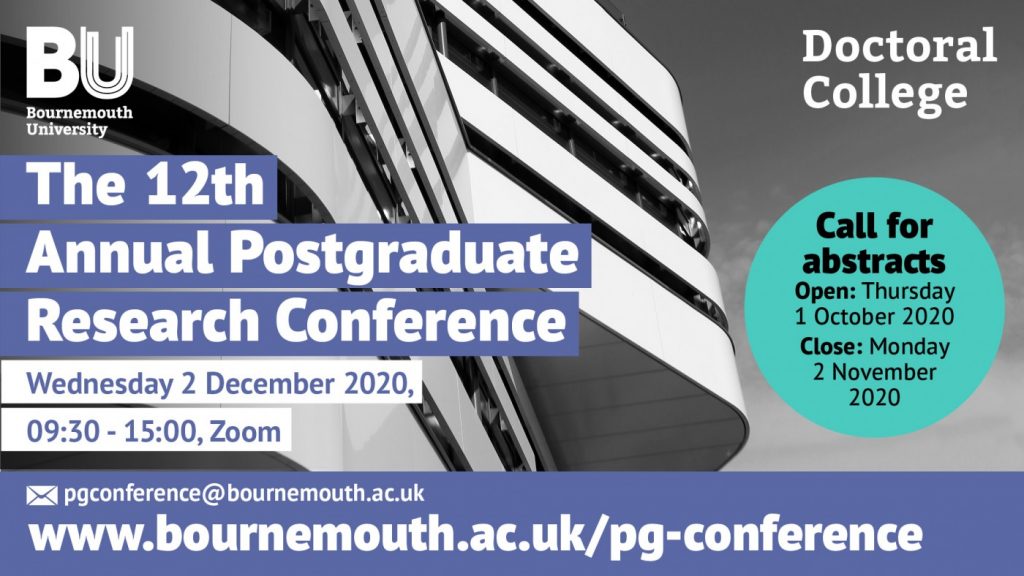



 Engagement: Bournemouth University), on 14th October 2020, undergraduate Psychology Students interacted with students from Symbiosis School of Liberal Arts (SSLA) engaged in the UNESCO Story Circles. This event was planned to provide an opportunity for the stude
Engagement: Bournemouth University), on 14th October 2020, undergraduate Psychology Students interacted with students from Symbiosis School of Liberal Arts (SSLA) engaged in the UNESCO Story Circles. This event was planned to provide an opportunity for the stude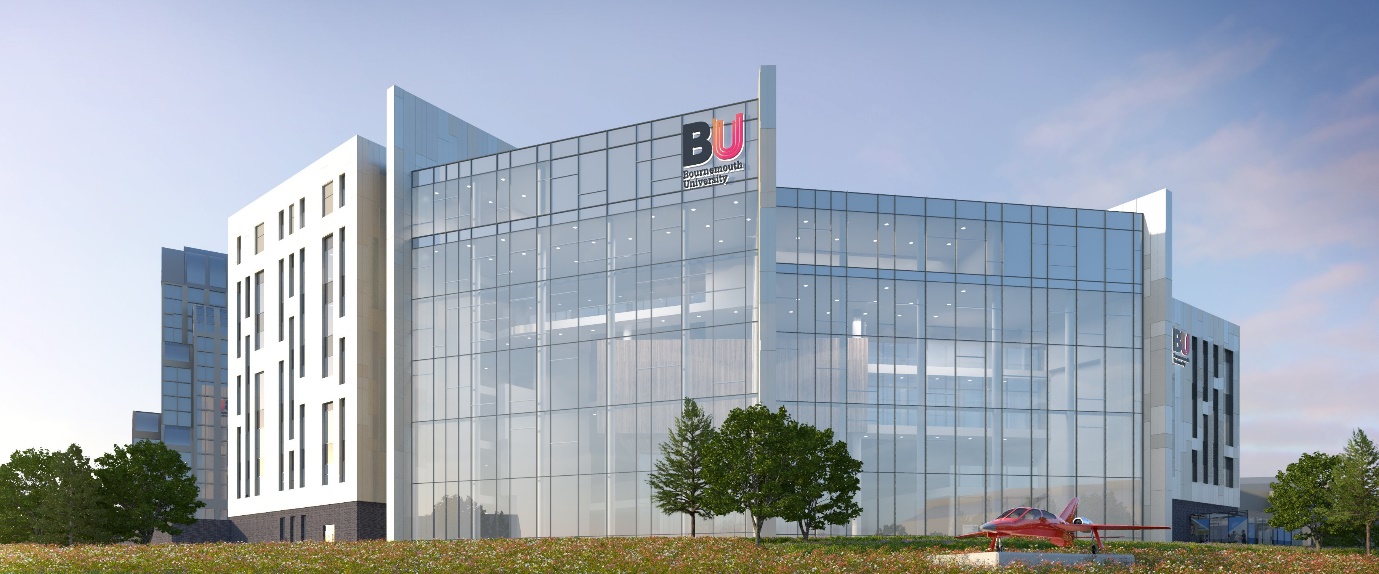
 Please see the draft agenda below and
Please see the draft agenda below and 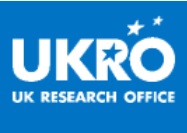 UKRO delivers subscription-based advisory service for research organisations and provides Marie Skłodowska-Curie Actions (MSCA) and European Research Council (ERC) National Contact Point services in the UK. As part of UKRO services, BU members of staff may sign up to receive personalised email alerts and get early access to the EU funding related publications on UKRO portal.
UKRO delivers subscription-based advisory service for research organisations and provides Marie Skłodowska-Curie Actions (MSCA) and European Research Council (ERC) National Contact Point services in the UK. As part of UKRO services, BU members of staff may sign up to receive personalised email alerts and get early access to the EU funding related publications on UKRO portal.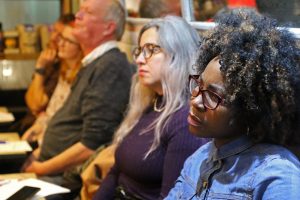

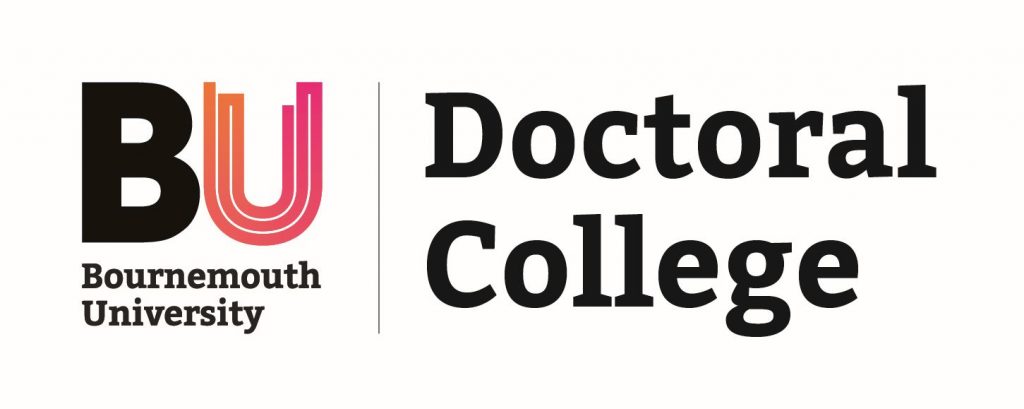
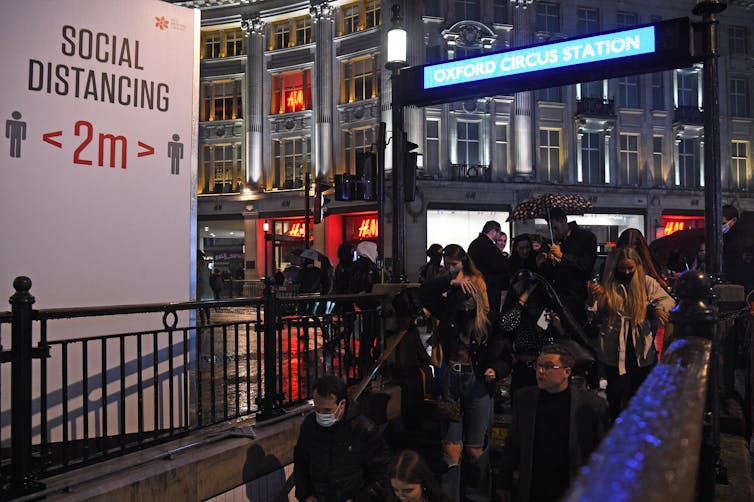
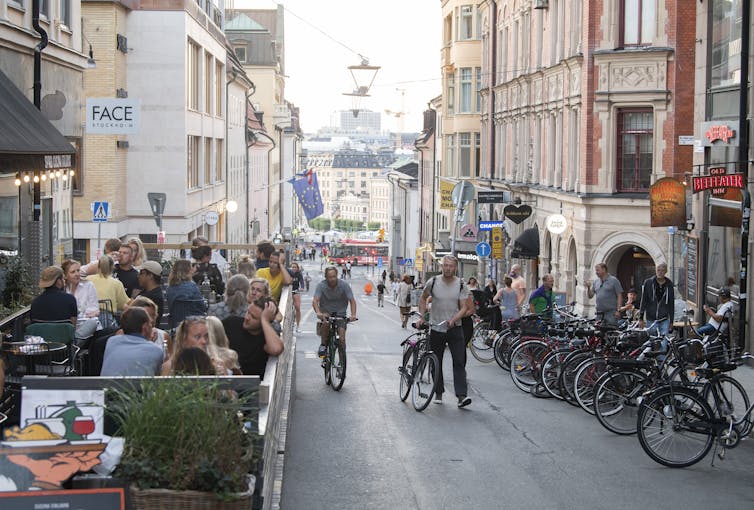
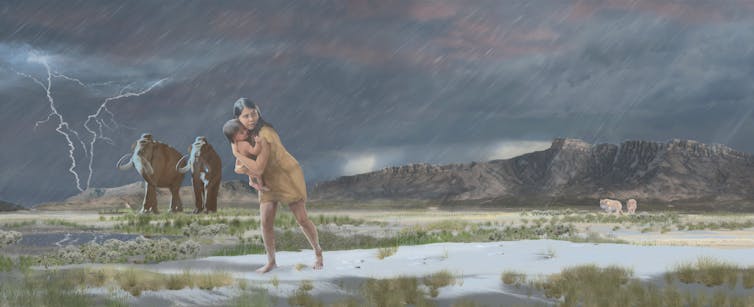
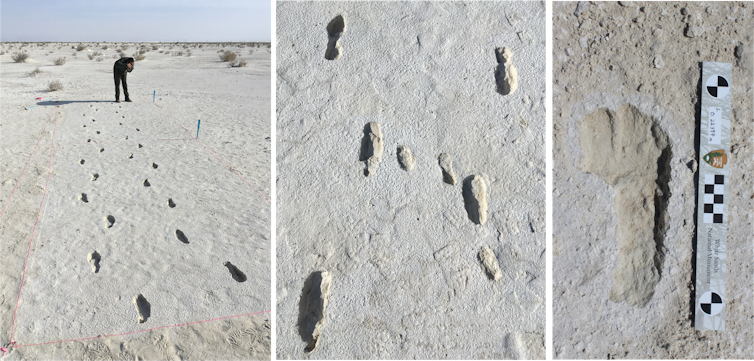
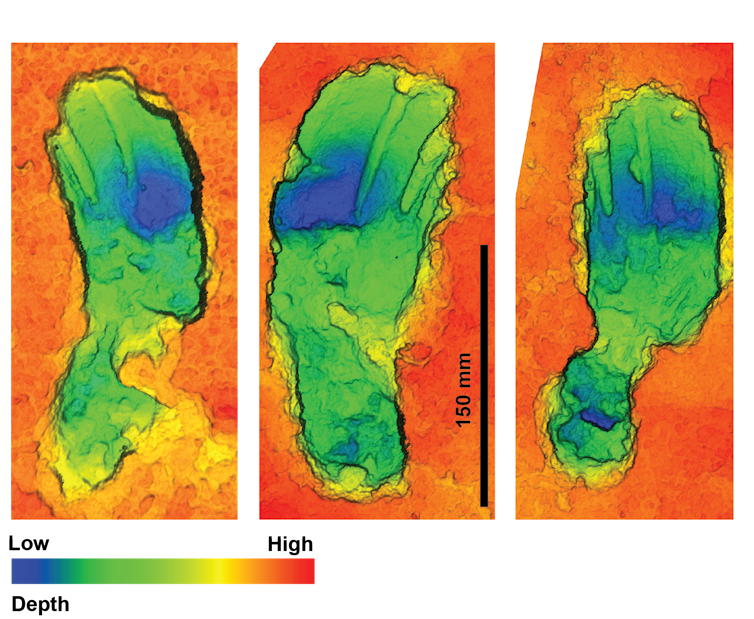
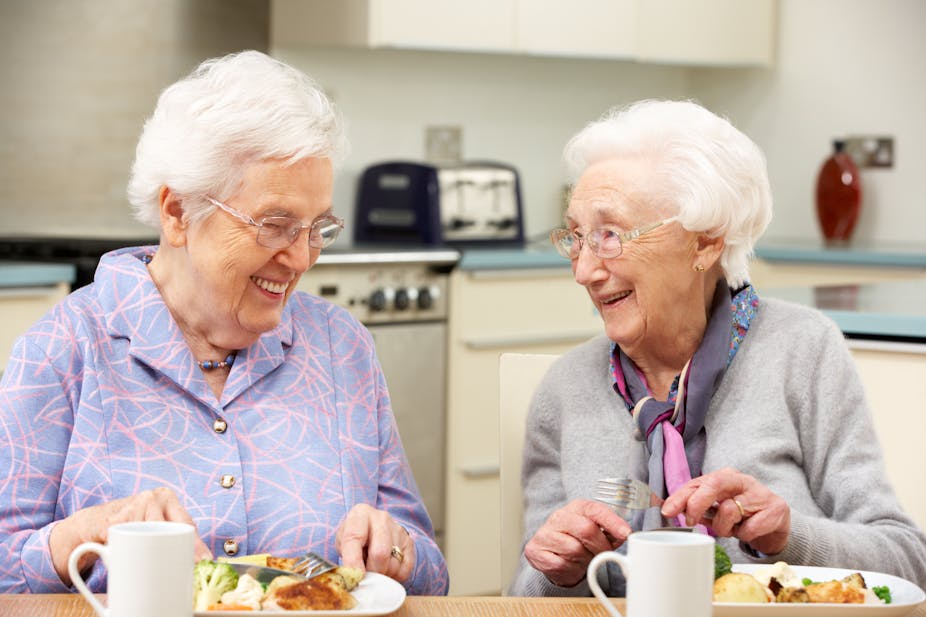












 BU paper among top 20 most cited papers
BU paper among top 20 most cited papers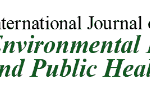 Nepal migrant workers returning from India
Nepal migrant workers returning from India New BU midwifery publication
New BU midwifery publication MSCA Postdoctoral Fellowships 2025 Call
MSCA Postdoctoral Fellowships 2025 Call ERC Advanced Grant 2025 Webinar
ERC Advanced Grant 2025 Webinar Horizon Europe Work Programme 2025 Published
Horizon Europe Work Programme 2025 Published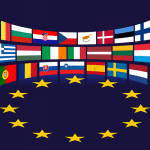 Horizon Europe 2025 Work Programme pre-Published
Horizon Europe 2025 Work Programme pre-Published Update on UKRO services
Update on UKRO services European research project exploring use of ‘virtual twins’ to better manage metabolic associated fatty liver disease
European research project exploring use of ‘virtual twins’ to better manage metabolic associated fatty liver disease